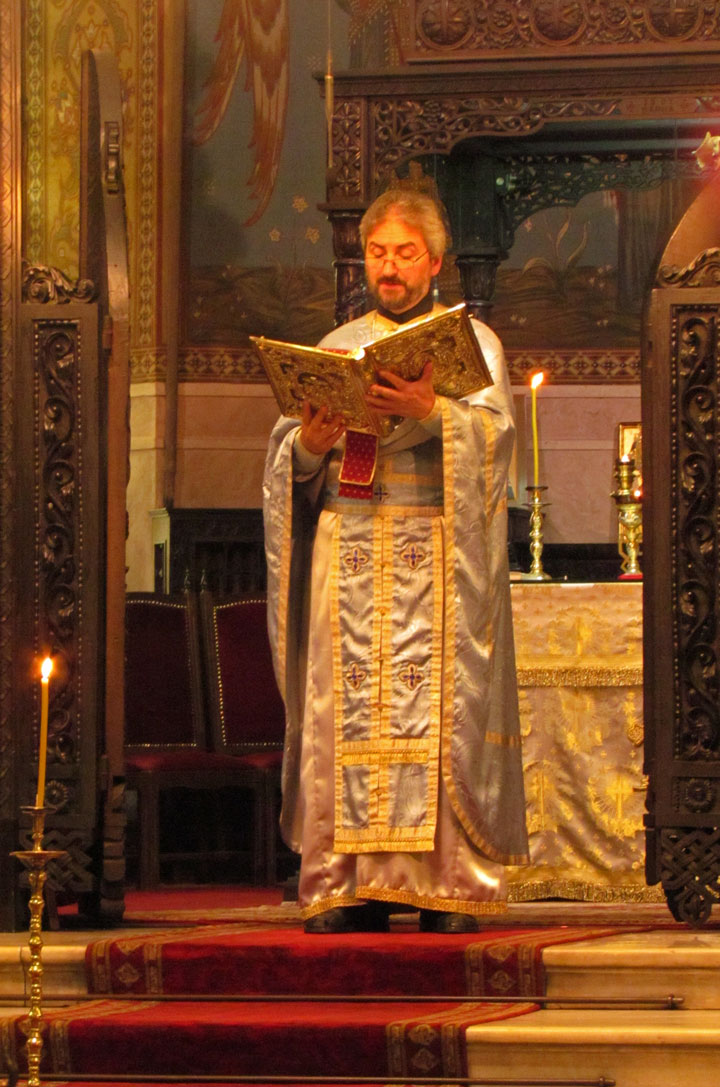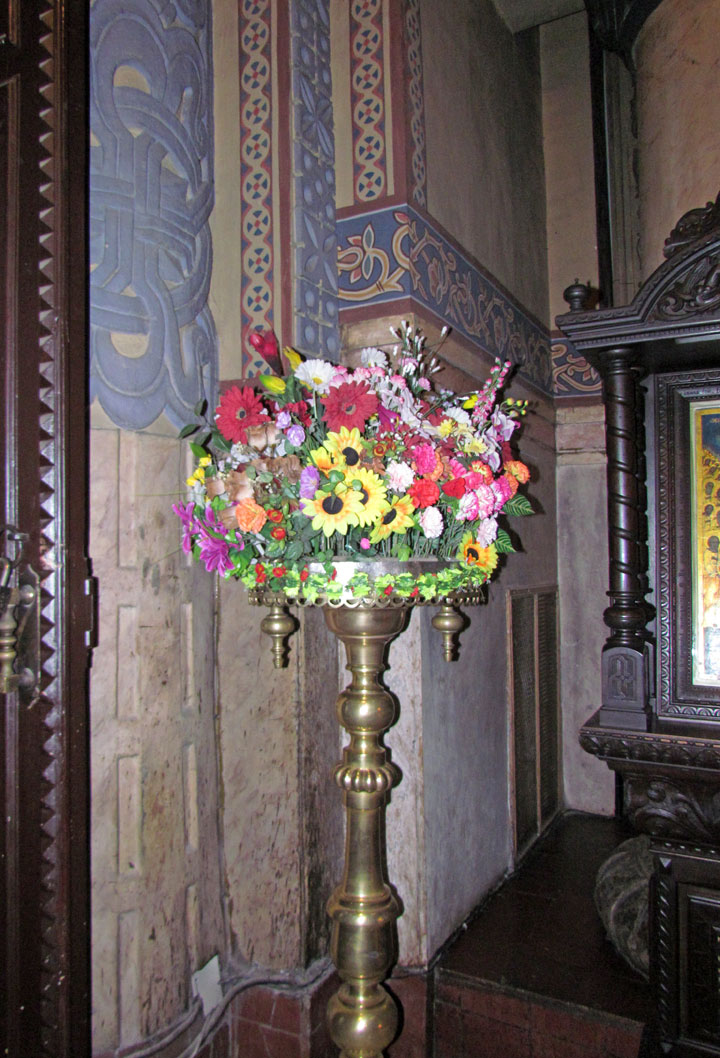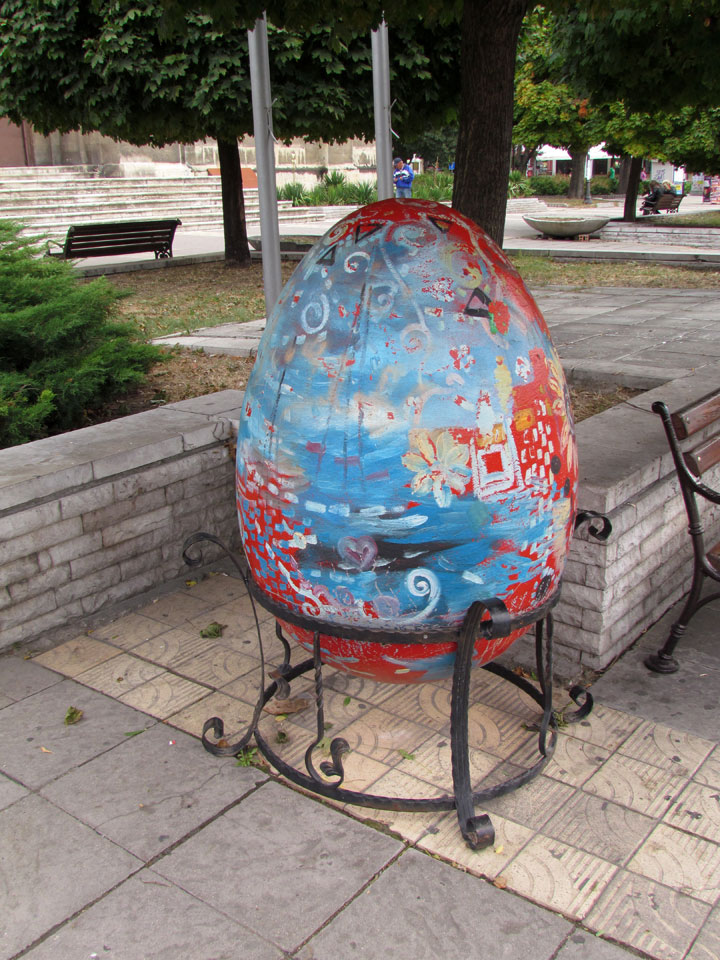

Theotokos Cathedral
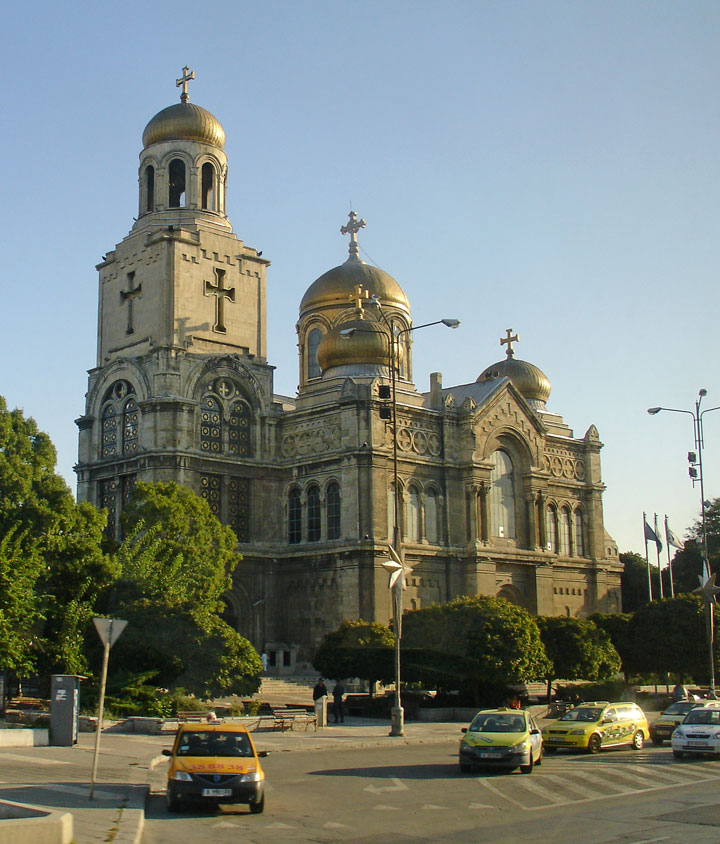
Theotokos Cathedral
The Dormition of the Theotokos Cathedral (Катедрален храм "Успение Пресвятия Богородици" or Катедрален храм "Успение Богородично" translit. Katedralen Hram Uspenie Bogoroditschno) is the largest and most famous Bulgarian Orthodox cathedral in the Bulgarian Black Sea port city of Varna, officially opened on 30 August 1886. It is the residence of the bishopric of Varna and Preslav and one of the symbols of Varna.
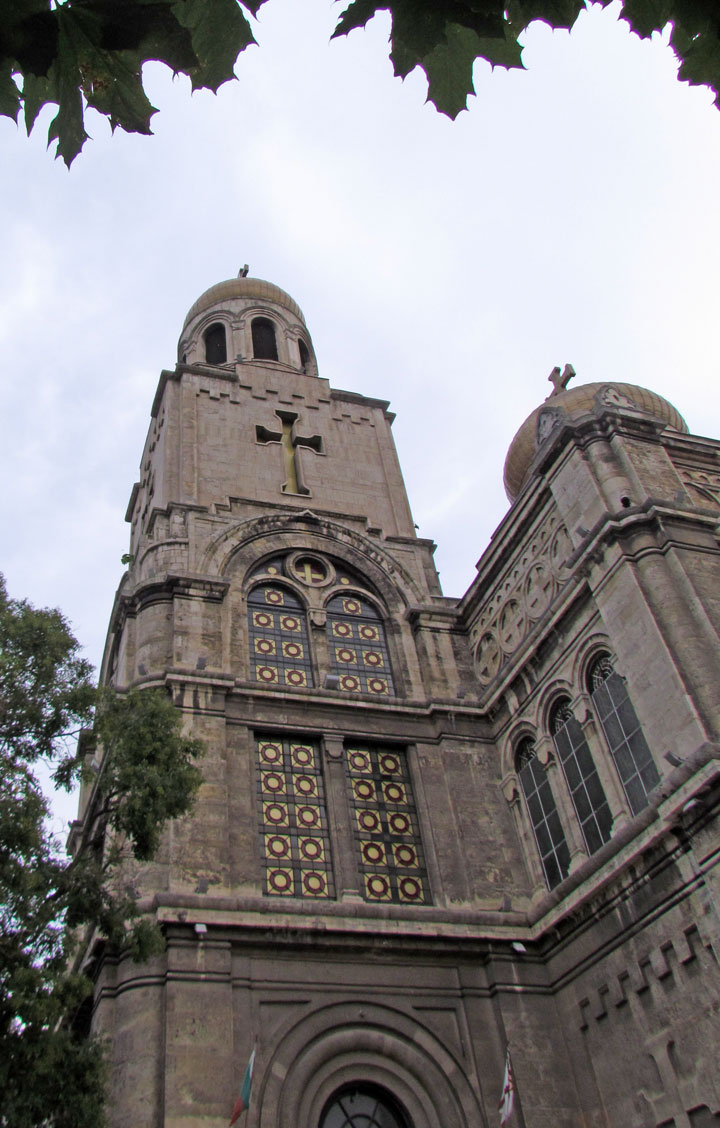
During Russian Knyaz Dondukov-Korsakov's visit to Varna, he noticed the need for
a cathedral church that would suit the needs of the growing city's population of
Eastern Orthodox Christians. Metropolitan Simeon gathered the community to elect
a commission aimed at preparing the construction of a new church, particularly
selecting the spot, raising money and securing timber and building materials.
The construction was evaluated at 300-400,000 French francs, most of them
expected to be collected by means of voluntary donations. The 15,000 francs that
were initially collected were quickly laid out, but the Bulgarian government
granted a sum of 100,000 leva and a lottery of 150,000 2-lev tickets was run.
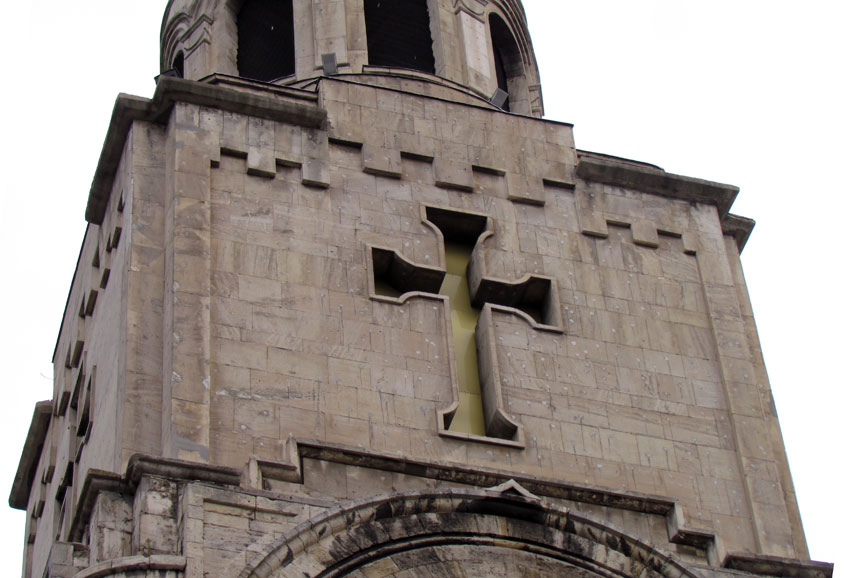
Primarily materials from the vicinity of Varna were used for the construction of
the cathedral. Stones from the destroyed fortified walls of the city were
collected, material for the fašade was brought from the neighboring villages of
Lyuben Karavelovo and Kumanovo, the inner columns were made of local stone. The
outer columns under the windows used stone from Rousse and the arches relied on
limy freestone. Copper plates for the roof, as well as elevating gear to lift
the blocks of stone, were brought from England.
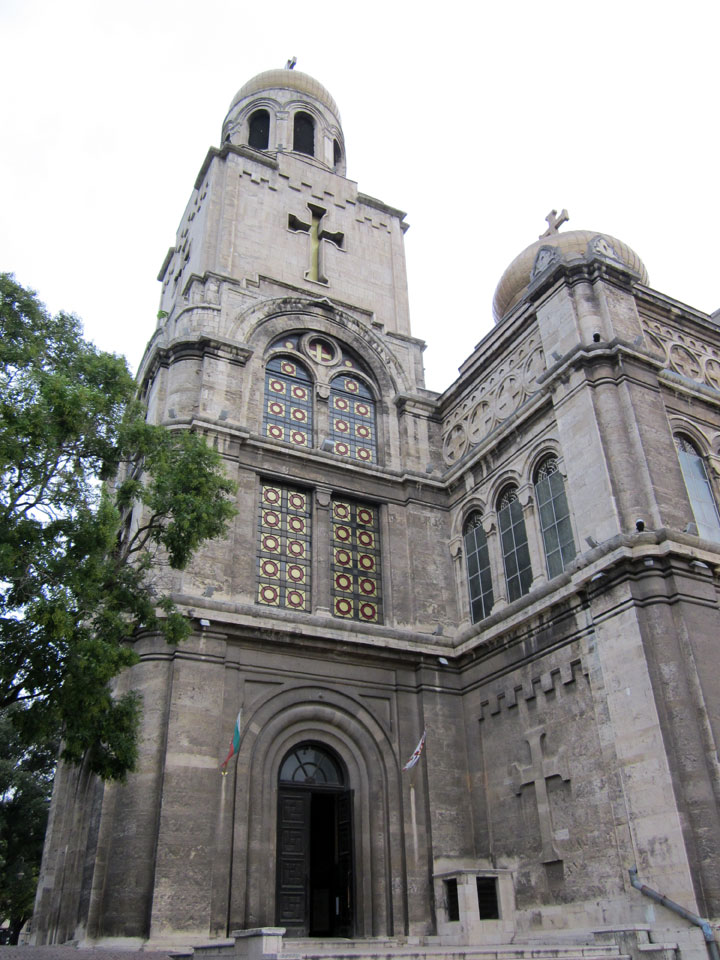
The foundation stone was laid by Bulgarian Knyaz Alexander on 22 August 1880
after a solemn ceremony and prayer in front of a crowd of Bulgarians and
Armenians. Interestingly, the Knyaz gave amnesty to all the local prisoners that
had three months or less left to spend in prison.

The name that was chosen, Dormition of the Theotokos, was in memory of Russian
Empress consort Maria Alexandrovna, a benefactress of Bulgaria and aunt of the
Bulgarian knyaz, who had recently died.
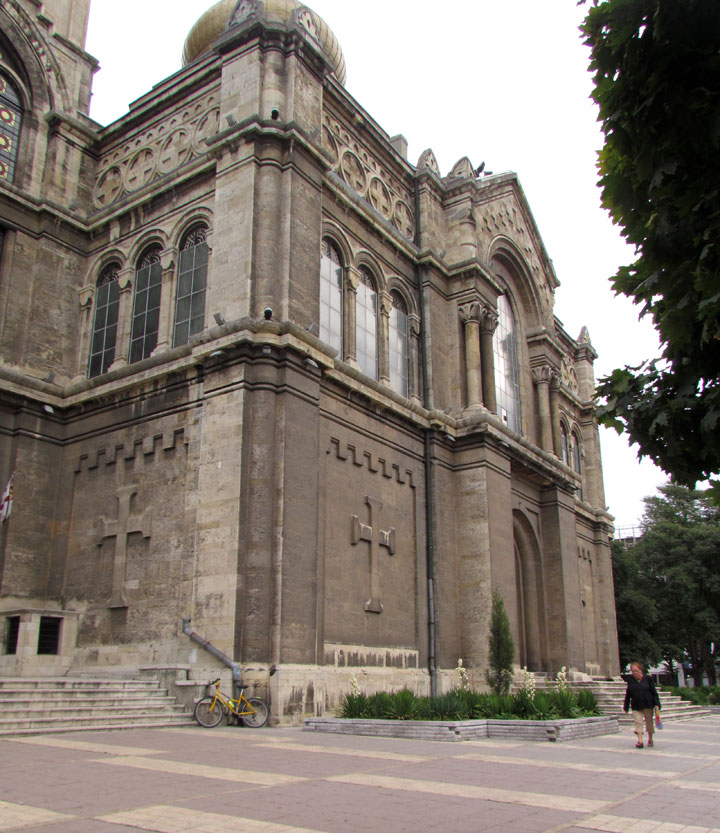
The initially selected spot was not liked by the knyaz, who preferred a location
on a hill in the then-outskirts of the city, where a garden could also be
arranged and so that the cathedral could be seen from the whole city.
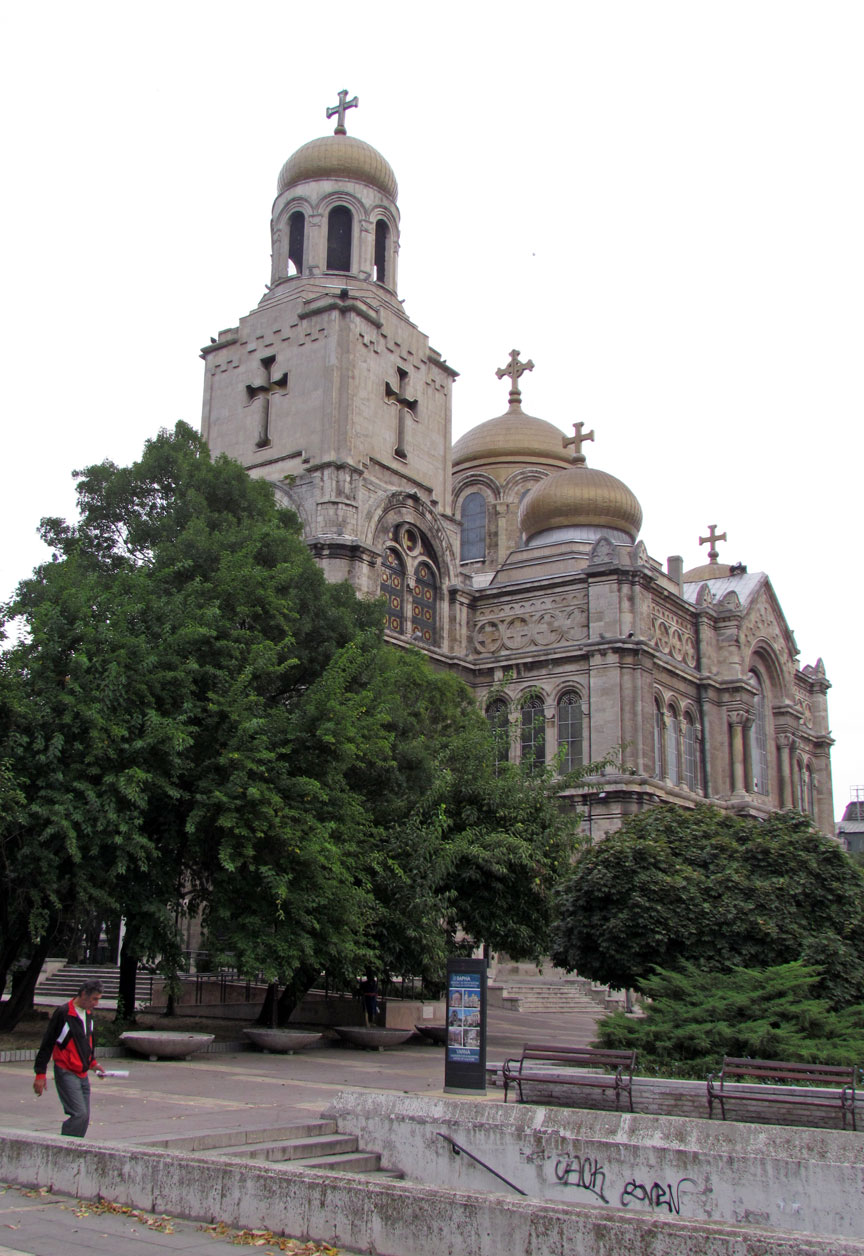
The project for the cathedral, modeled after the temple in the Peterhof Palace,
was by an Odessan architect by the name of Maas. Construction began immediately
after the foundation stone was laid and took six years. Initially, the local
government concluded a 6,000-leva contract with the architect, but he soon asked
for more resources, so the commission decided to buy his plans but not engage
him with the construction. Thus, the foundations were laid after the plan of
Maas, whereas the building itself followed the plan of municipal architect P.
Kupka.
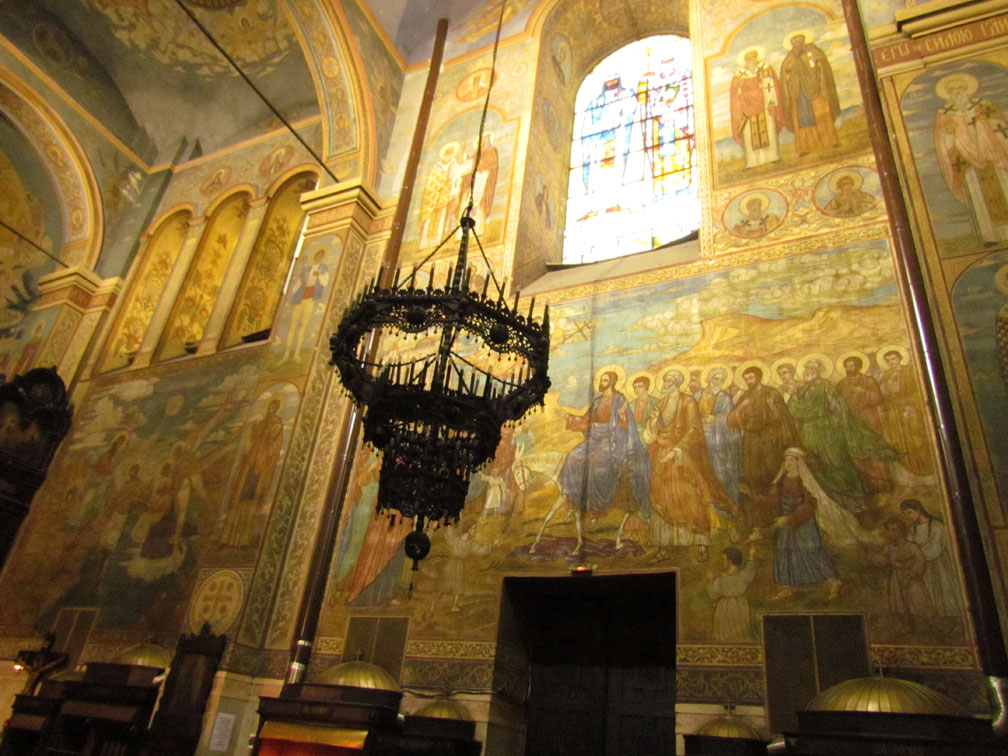
According to the project, the cathedral is a three-naved cross-domed basilica
featuring two aisles and sized of 35 by 35 m, with the main altar being
dedicated to the Dormition of the Theotokos, the north one to Saint Alexander
Nevsky and the south one to Saint Nicholas the Miracle Worker.

The issue of selecting a master builder was discussed in the summer of 1880, but
the negotiations with Kolyu Ficheto from Tarnovo proved unsuccessful. Local
master Vasil Ivanov was given the temporary guidance, the job was however was
assigned to Yanko Kostandi after a long search. On 15 March 1884, the commission
entrusted Gencho Kanchev from Tryavna with the task. The temple was erected in
the following year, the roof was finished in September and the first church
service was given on 30 August 1886.

The furnishing of the interior, however, also continued in the following years.
The bishop's throne, the work of Niko Mavrudi, was placed in 1897 and the
iconostasis was manufactured later by master Ivan Filipov from Debar. It was
decided that a new and separate bell tower would not be erected and instead a
dome would be lifted and a part of the original building adapted for the
purpose. The bell was supposed to weigh 100 poods (1.6 tons) and bear the
inscription "In honour of the Liberator". 42 small and 3 large icons were
brought from Russia as a donation by Nicholas II in 1901, additional 8 intended
for the middle and north doors following in 1904. The church's floor was covered
with ceramic tiles of different colors in 1911 and the balcony was finished
four years later.
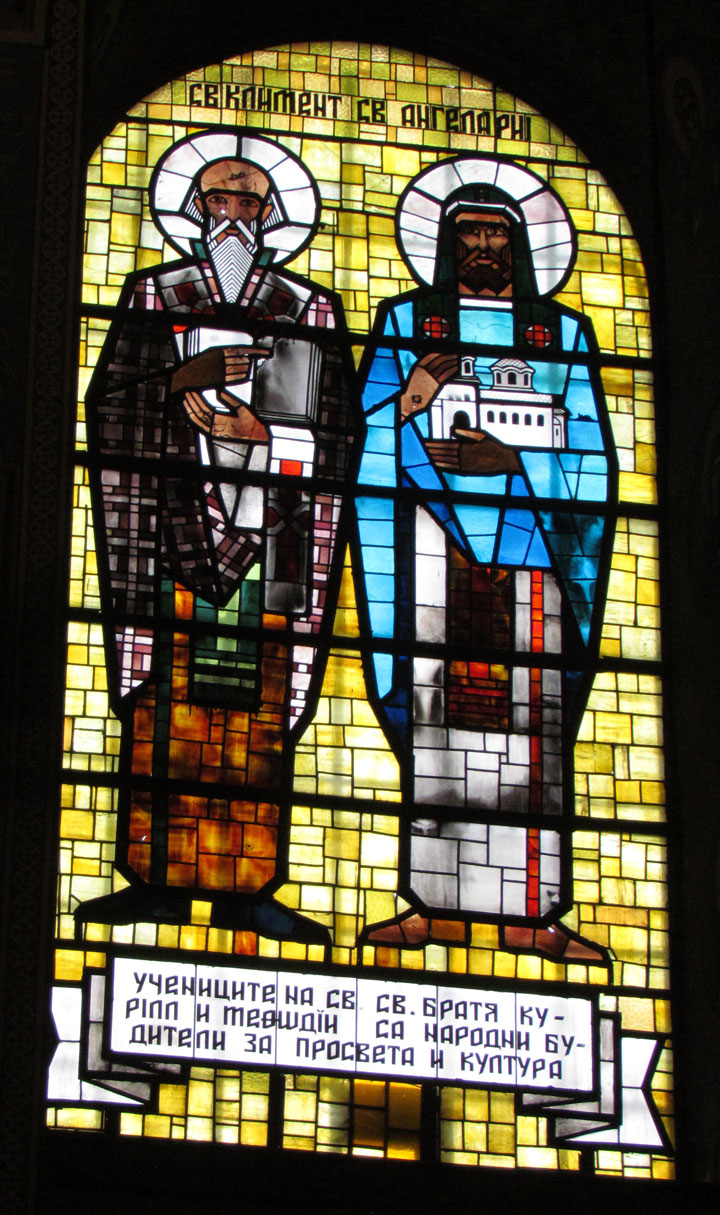
The 38 m-high belfry was fully erected between 1941 and 1943 by architect Stefan
Venedict Popow, the domes took their current appearance in the period, steam
heating was installed and the construction of the roof was changed as well. It
was initially very hard to find a contractor to sponsor the repairs, as well as
the securing and transportation of materials. The decoration of the Dormition of
the Theotokos Cathedral began after 1949 under Professor N. Rostovtsev, who
donated the narthex murals. The chandeliers that were then installed were the
work of woodcarver P. Kushlev.
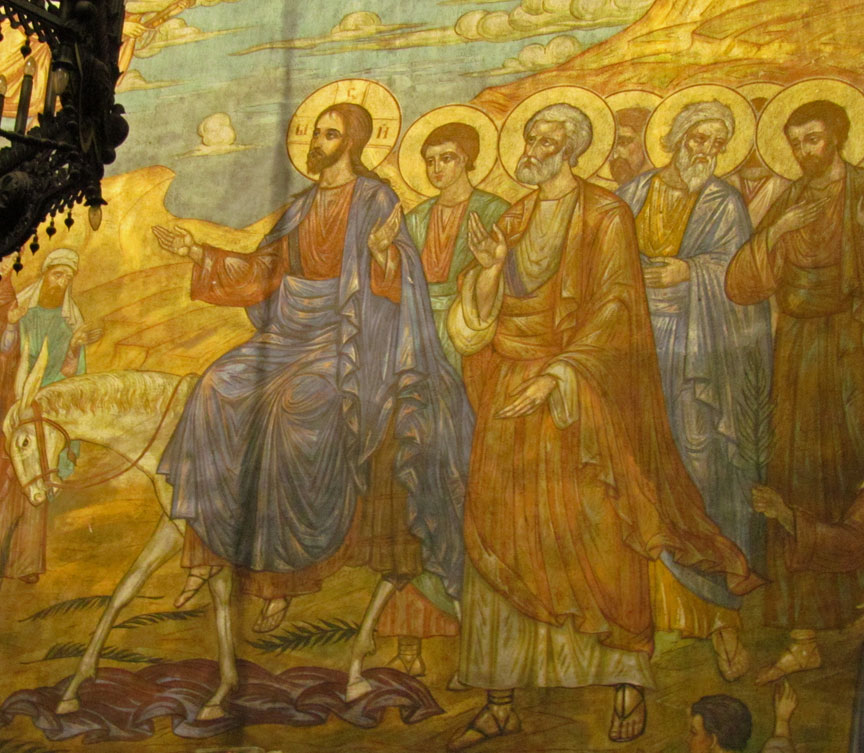
The large painted windows were installed in the 1960s. Saints Cyril and
Methodius are depicted on the larger south ones (looking towards the square),
while the north ones portray St Angelarius and St Clement of Ohrid.
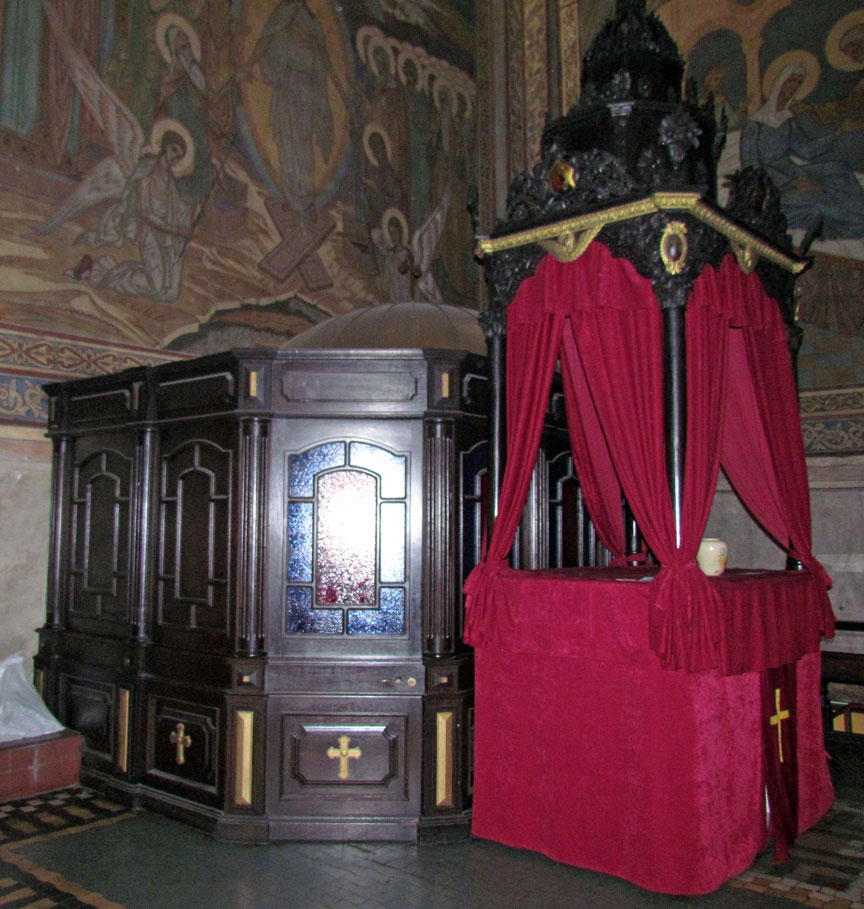
The copper domes, damaged by patina, were reconstructed and gilded in the spring
of 2000. The fašade was renovated the same year.
Text from Wikipedia

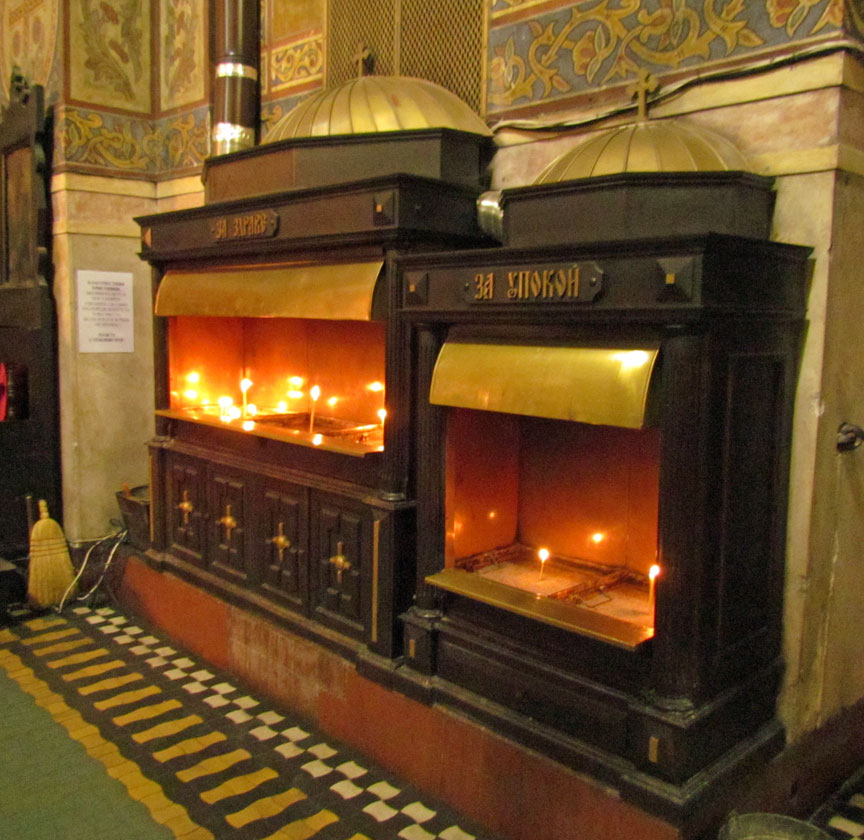

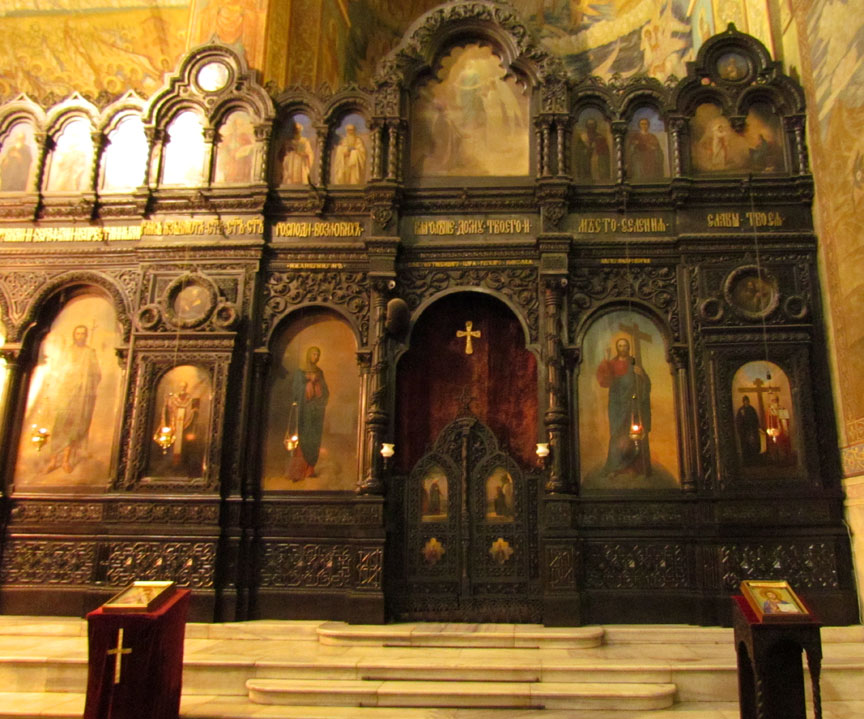
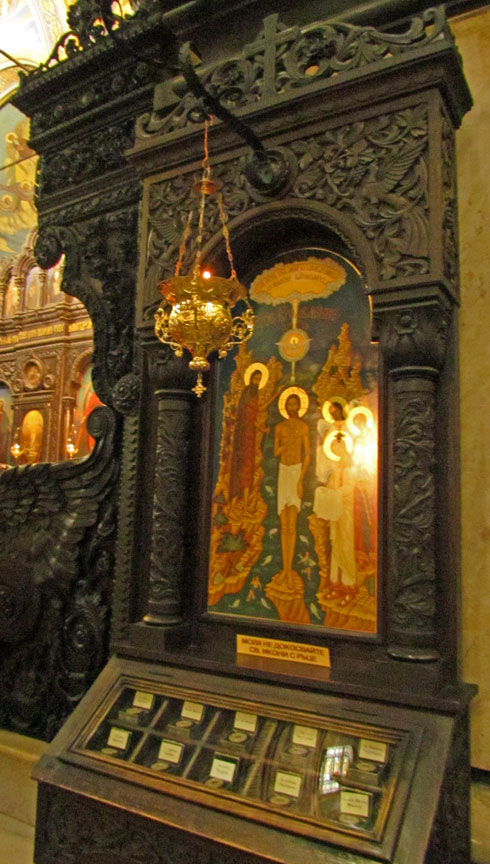
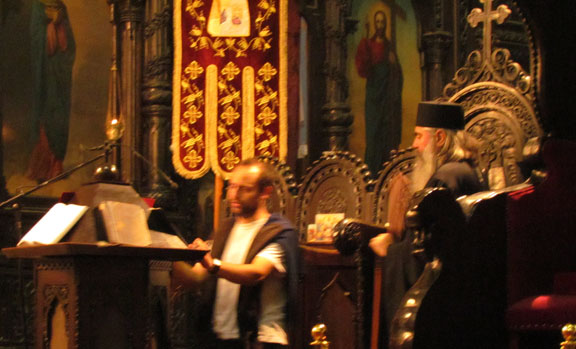
reading the service
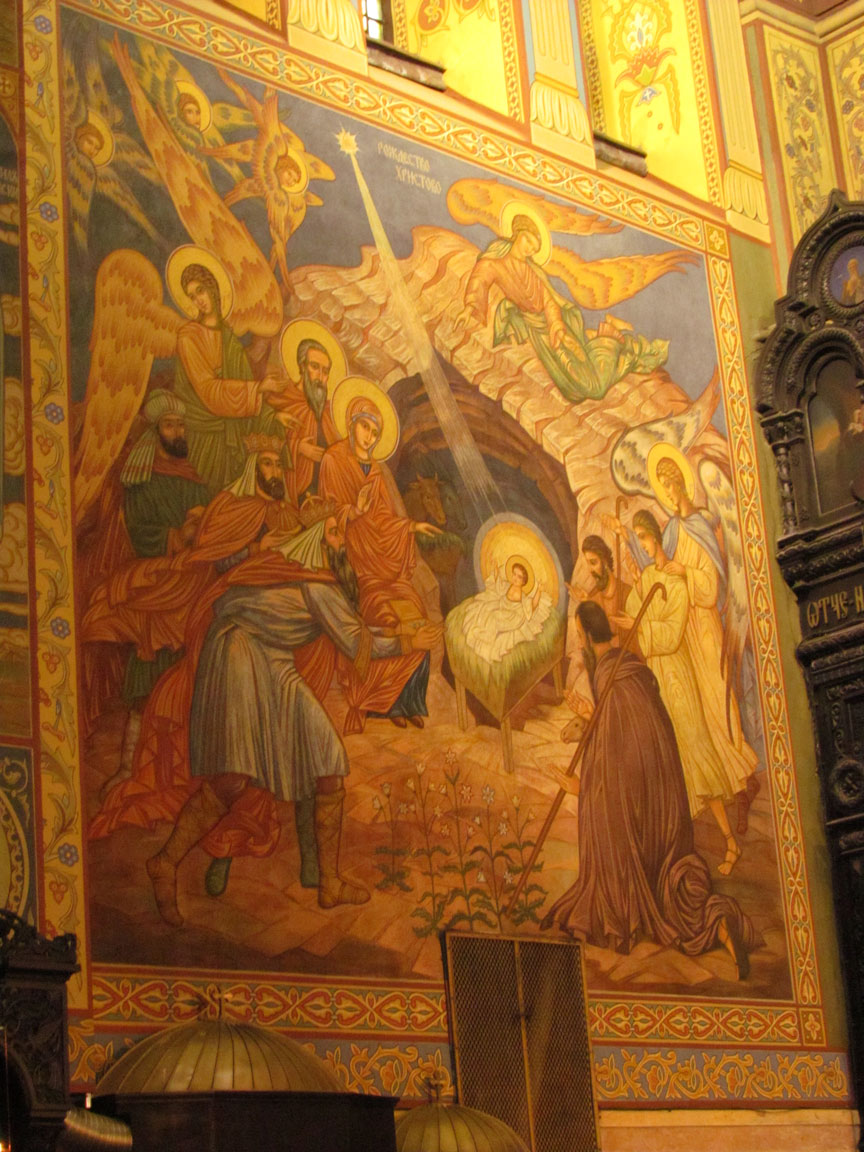
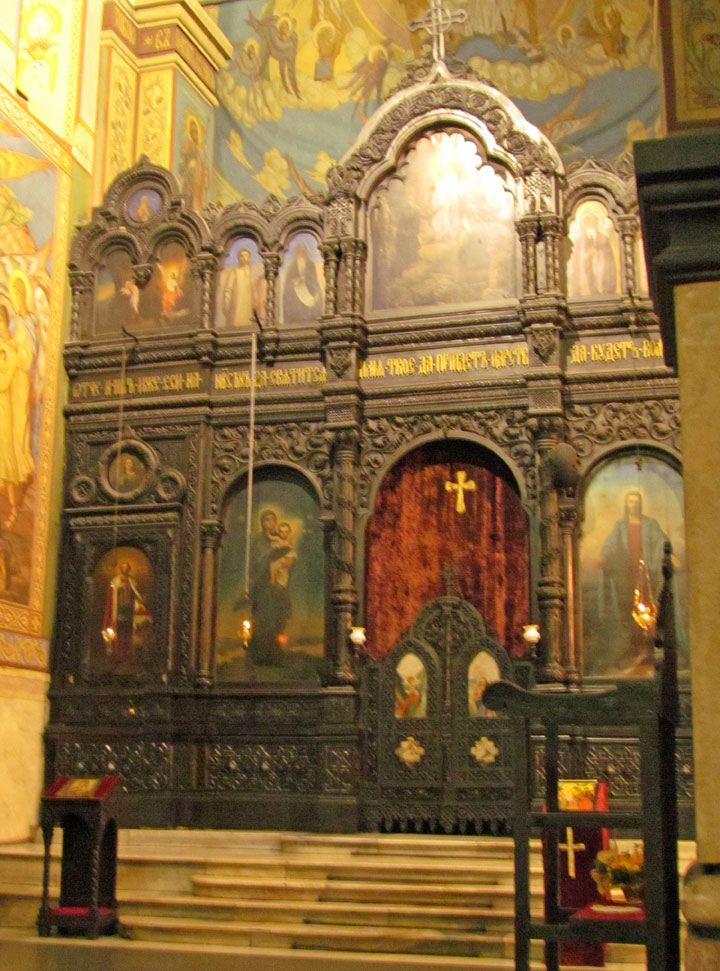
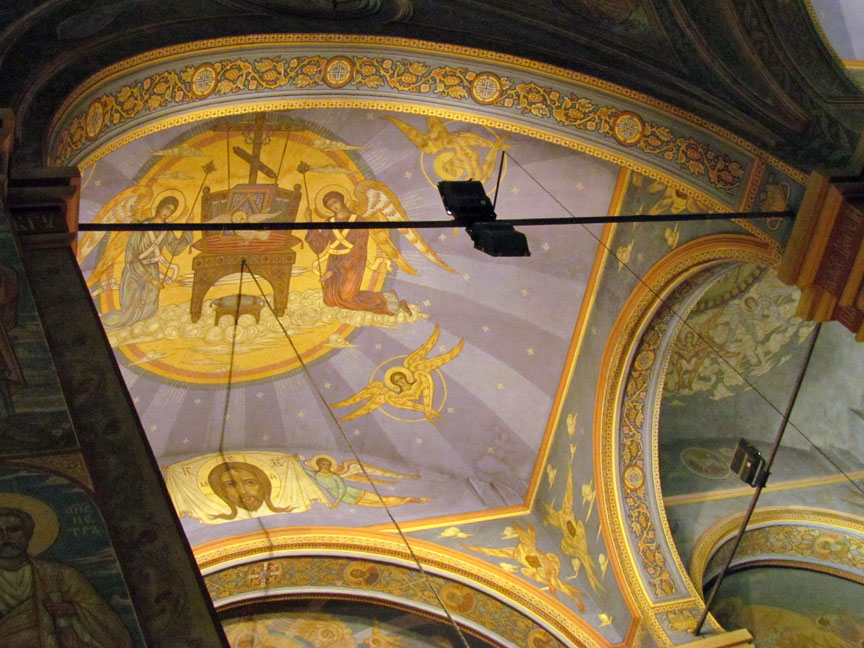
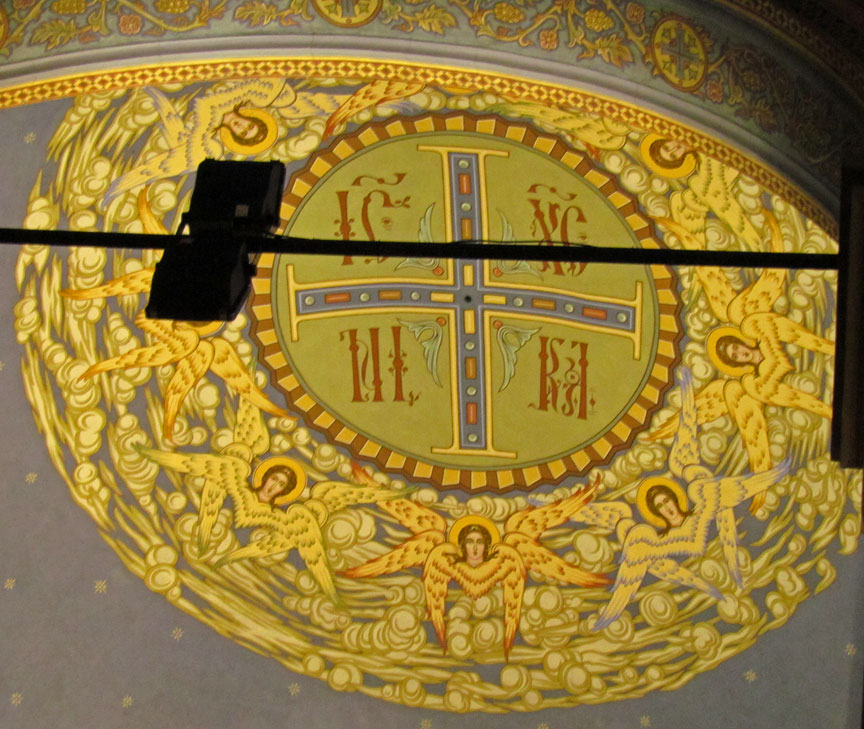

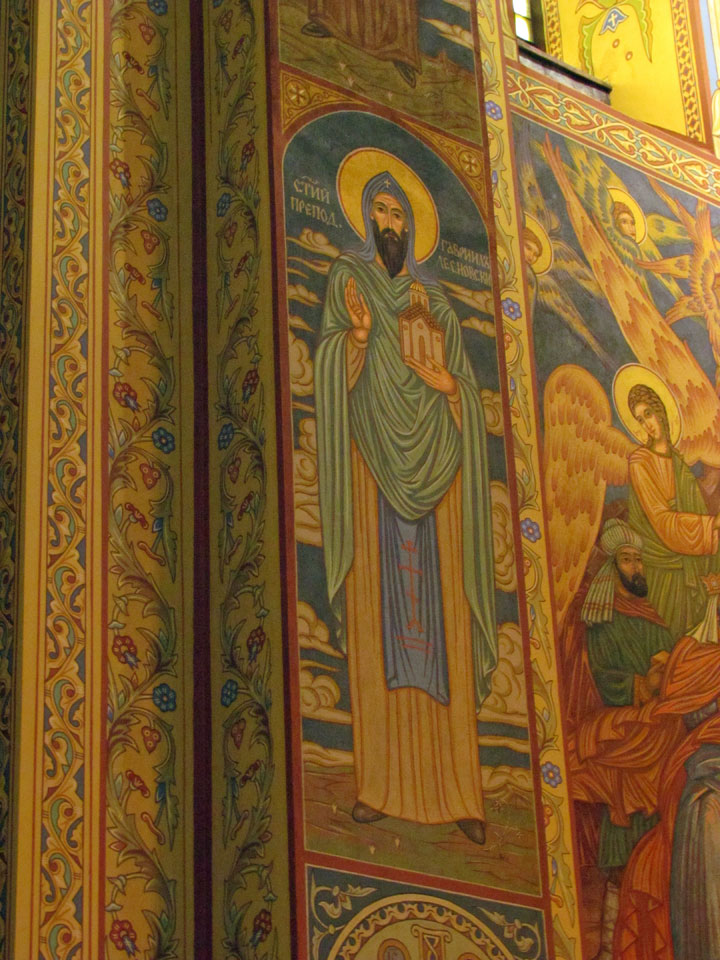

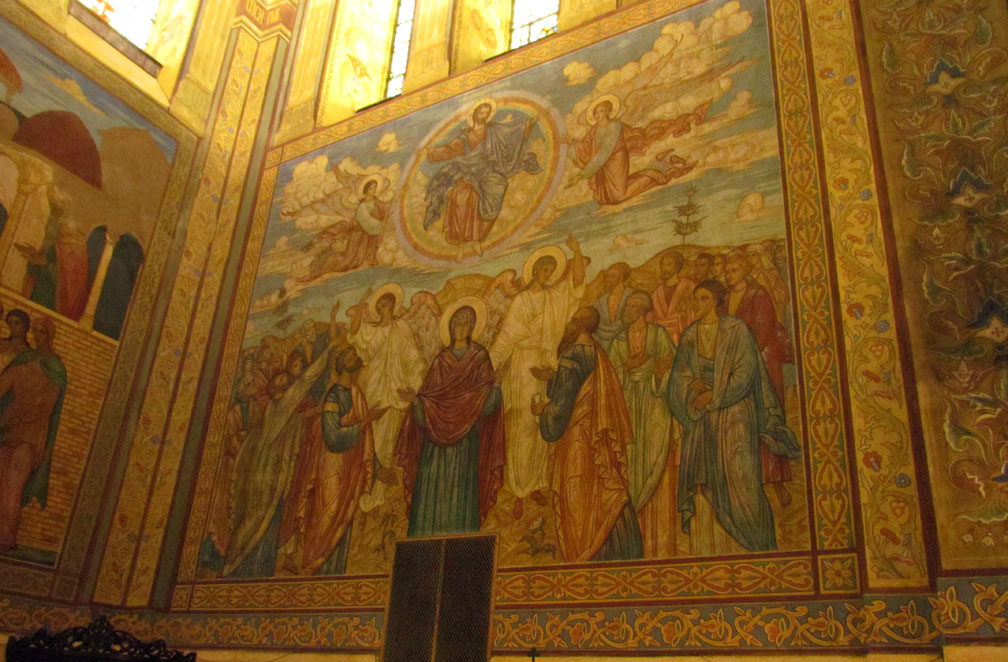

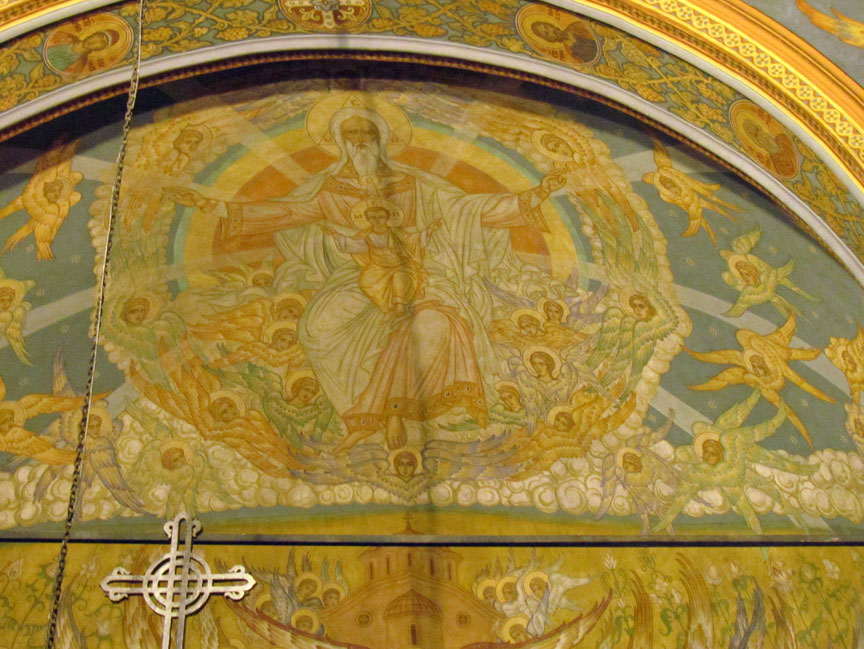
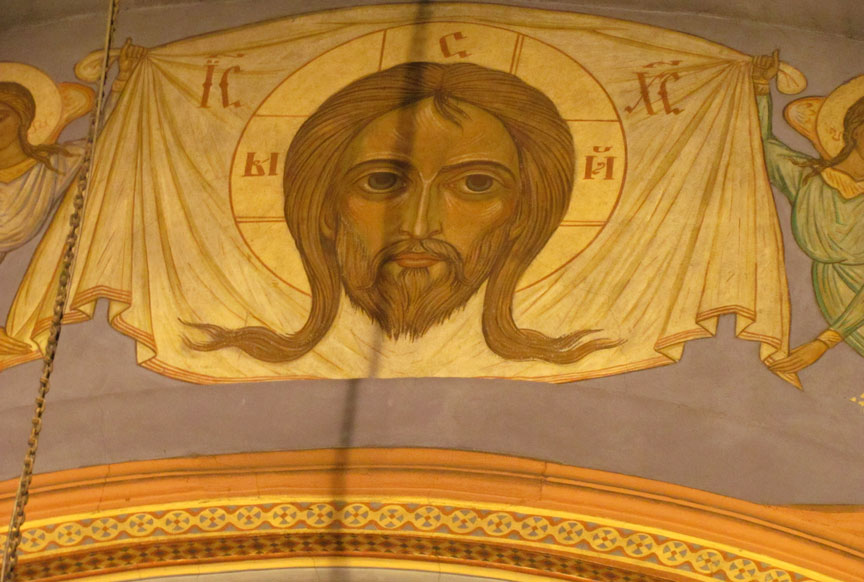
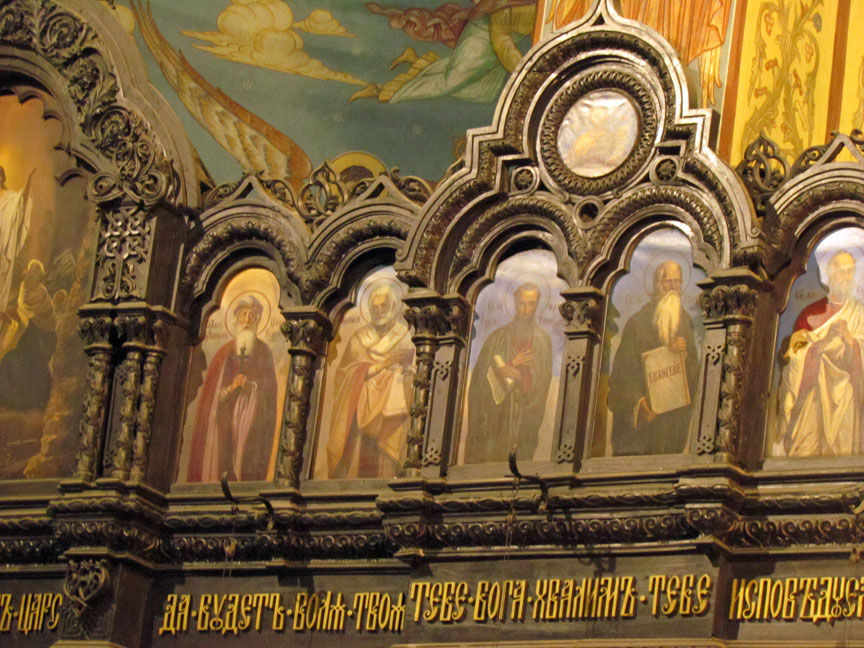
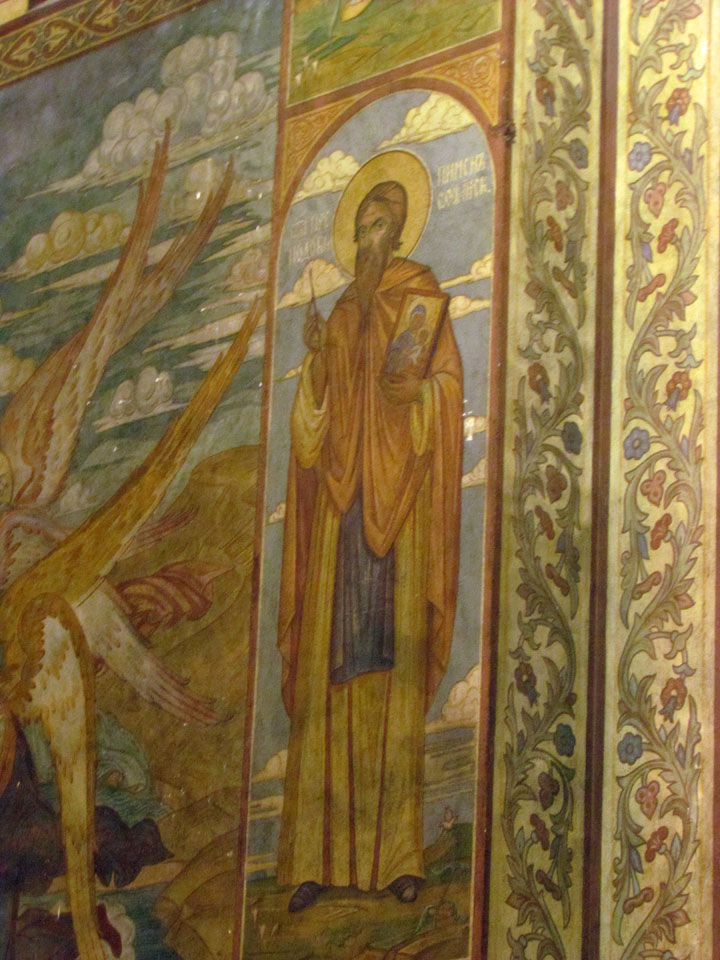
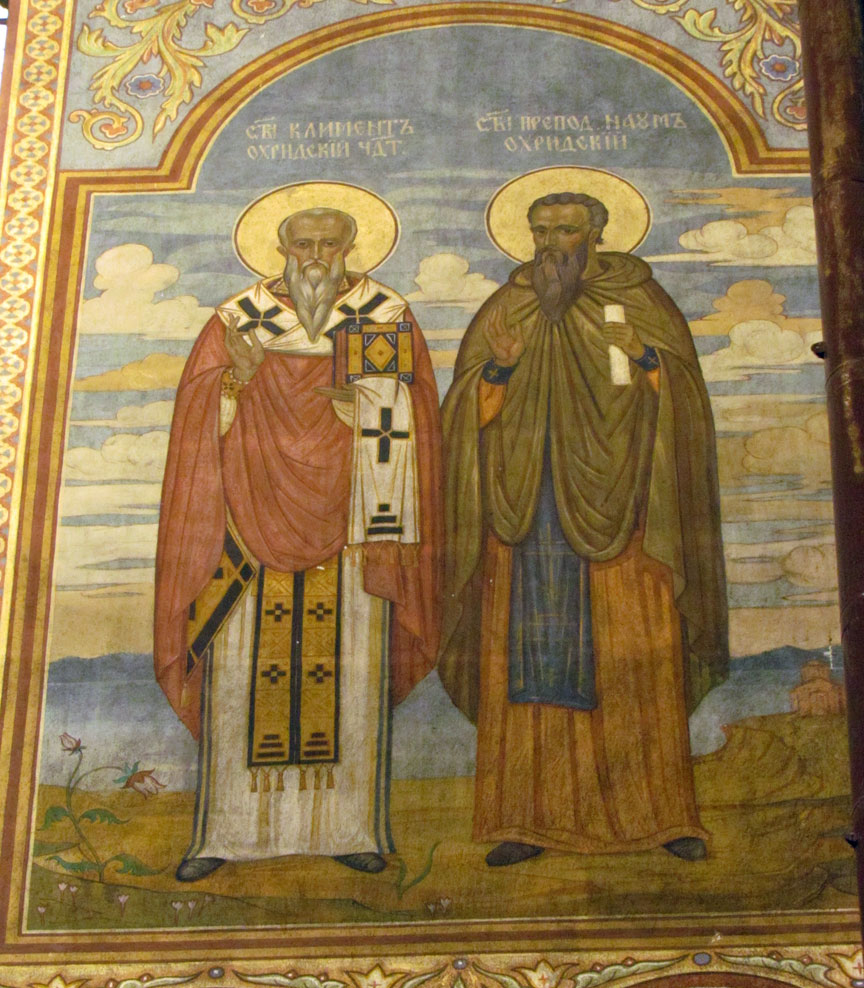
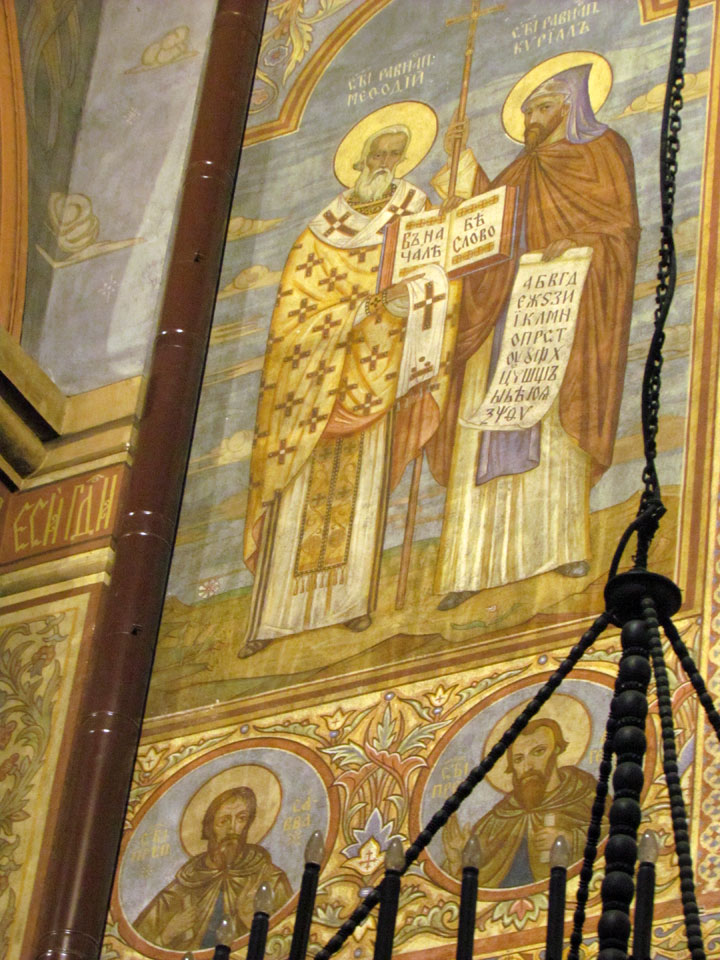
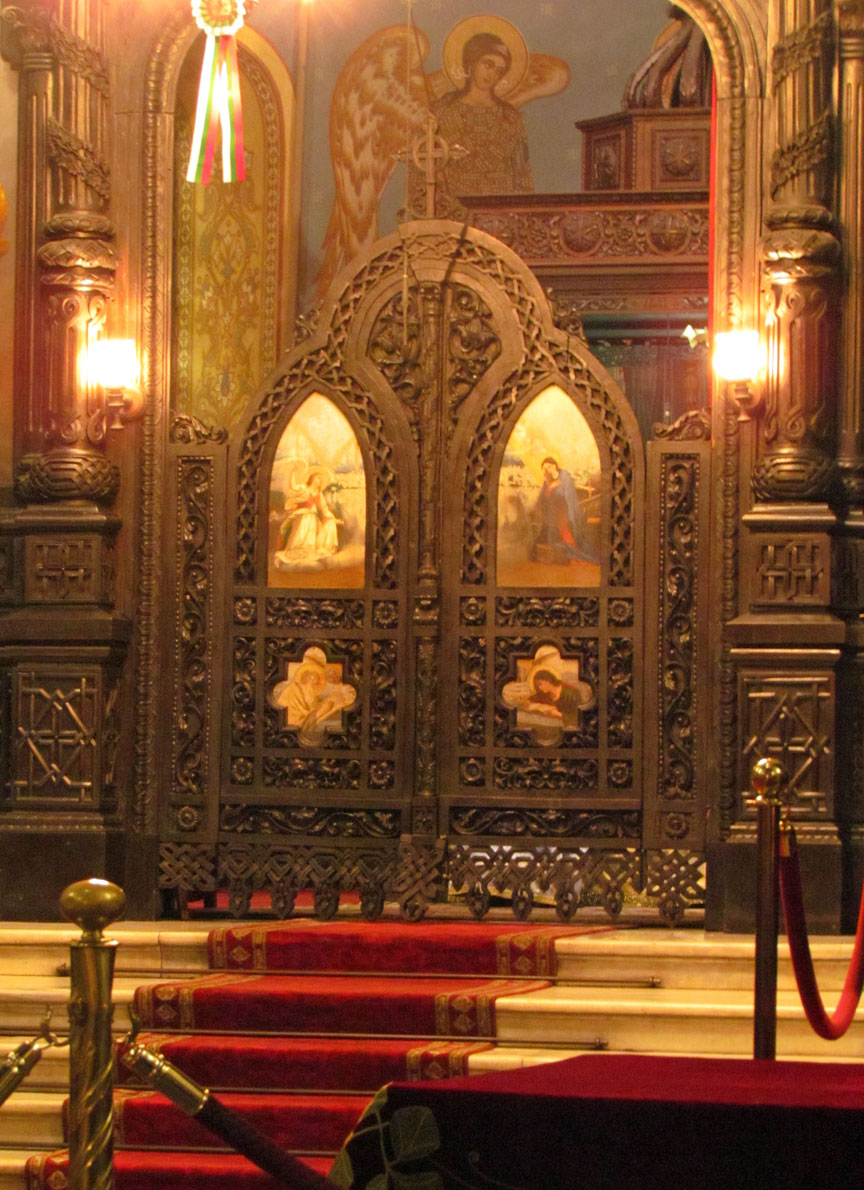

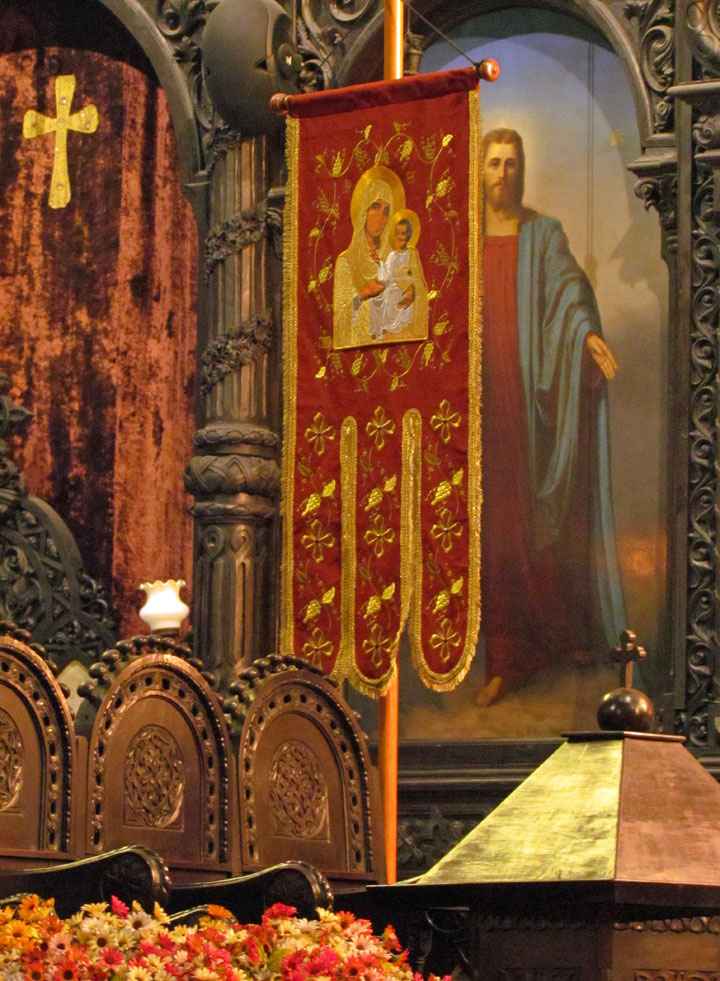
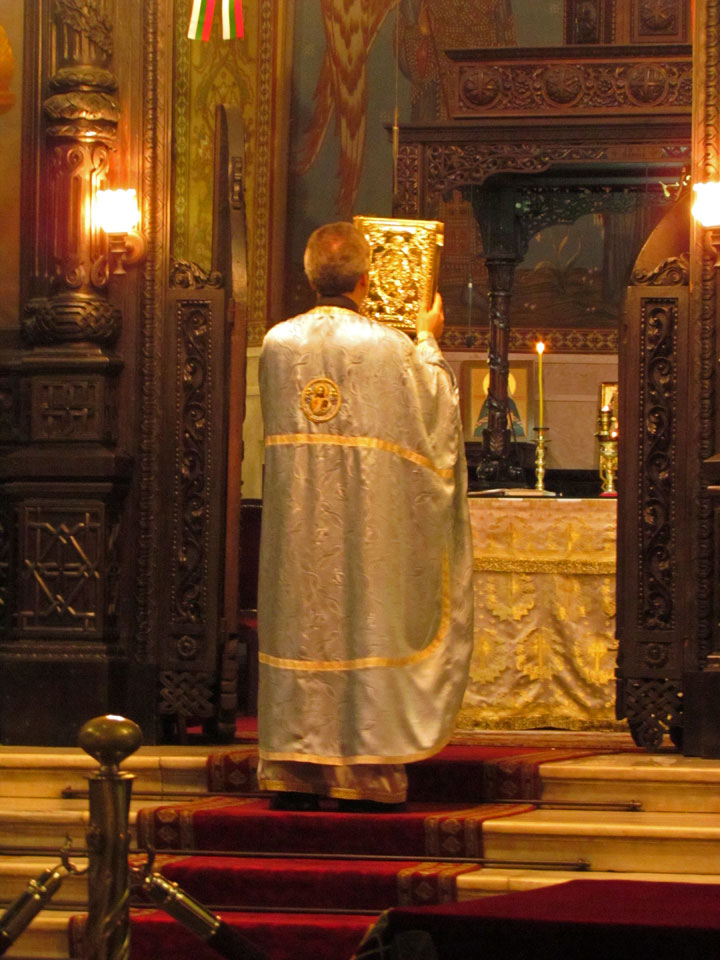
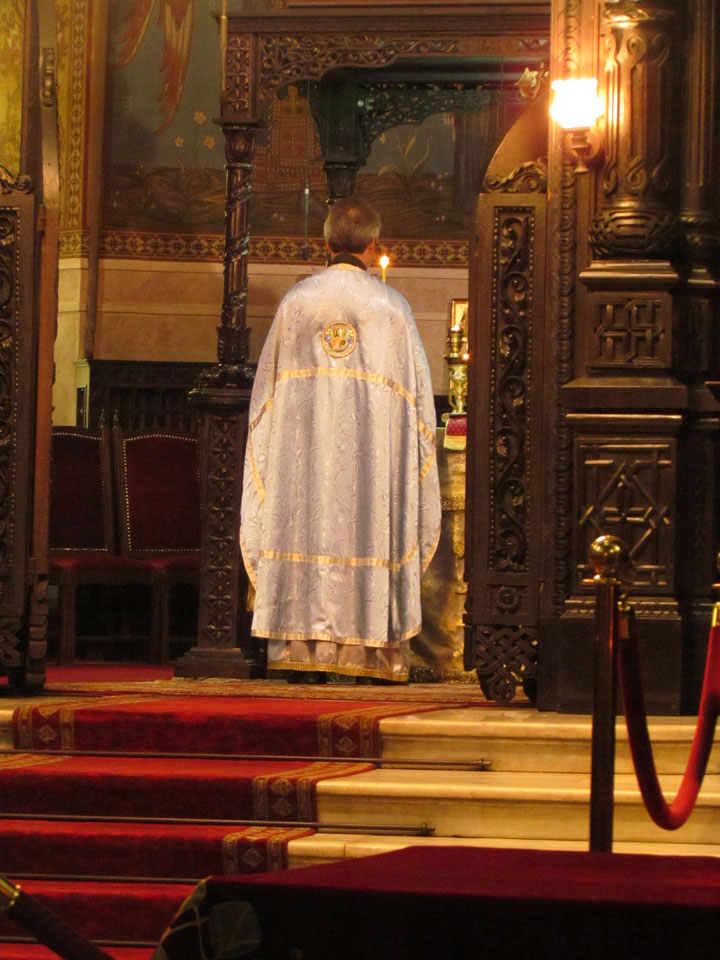
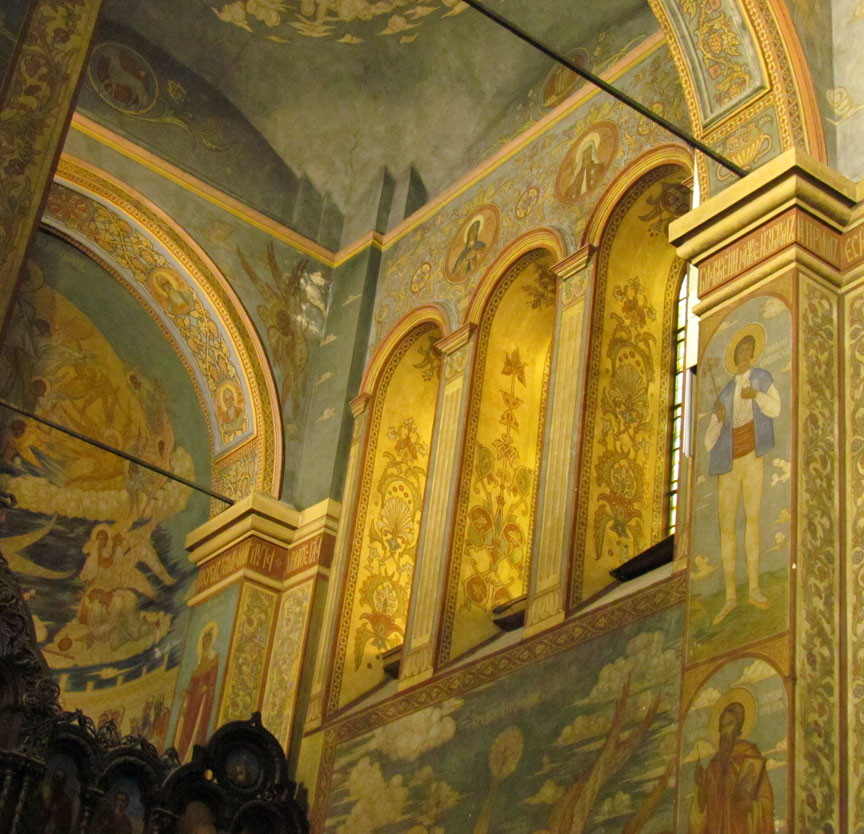

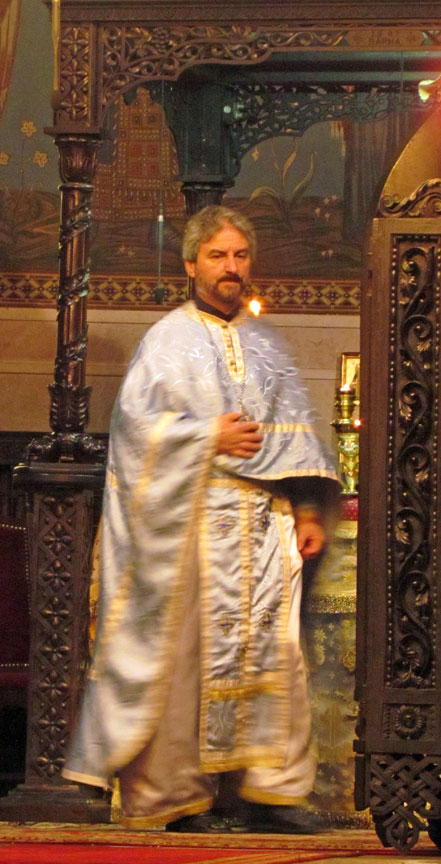
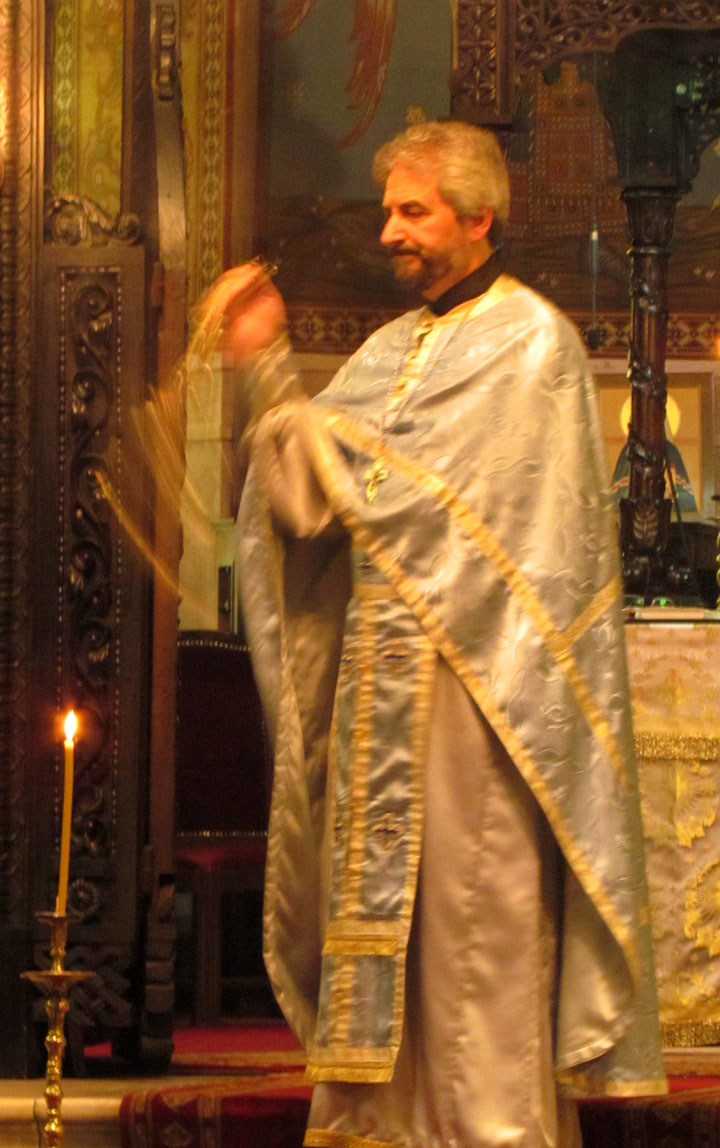
incense
